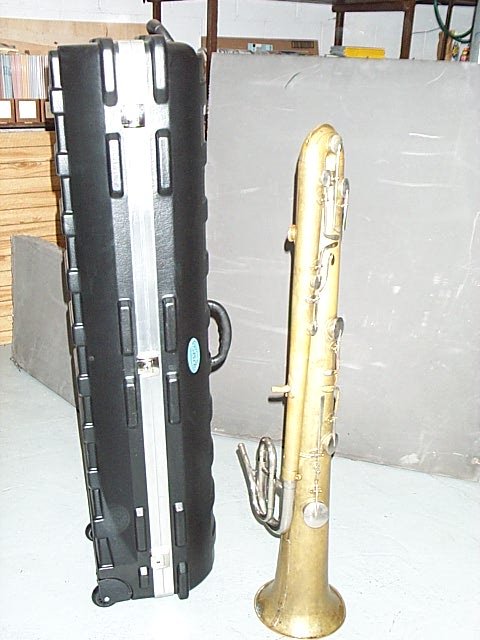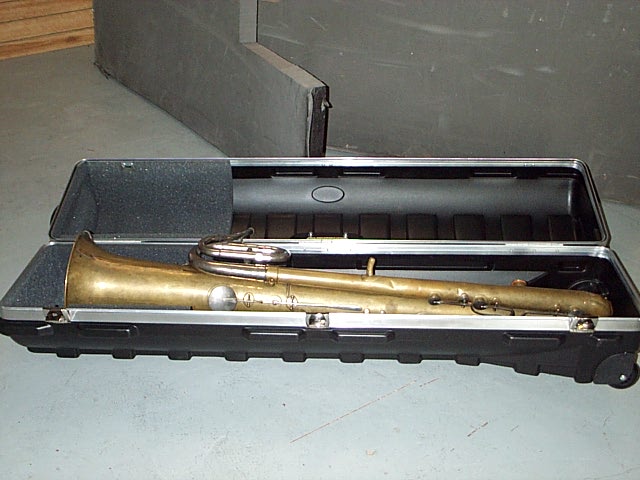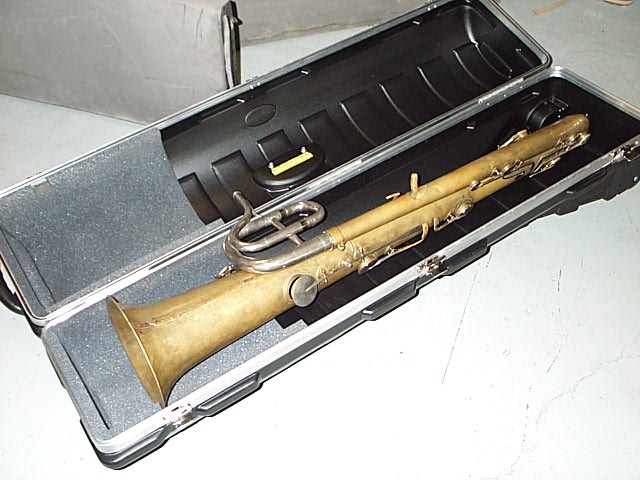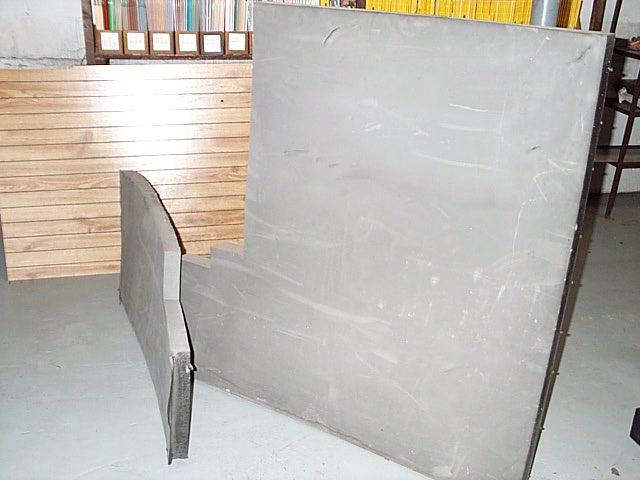The first step after purchasing the outer shell (SKB Golf case)
is to figure the best way to position the ophicleide inside the available
space. Some primary considerations:
1) The bell should be centered within the tubular cross section of the
case and prevented from touching any part of the case's shell.
2) The bottom bow should be centered in the front-to-rear dimension,
but if the bocal case is to be included the bow must be held lower in the
case (when laid horizontal) to leave room in the upper half of the case;
this also will simplify the fabrication of the padding that holds the bow
since it will be confined to only half the case.
3) To preserve integrity of the case shell, the aluminum 'valance' of
the case should support any internal mounting requirements (brackets, bolts,
etc.)
|
 |
In this photo, the ophicleide is positioned to be centered
roughly between the ends of the case. Notice that the stock SKB case includes
some foam rubber near the top end. This foam is not useful for padding
the instrument but improves the appearance of the case's inside. Some of
the foam will need to be cut out in order to fit new padding.
|

|
In this photo, it is apparent that the ophicleide's bocal (crook)
will not fit inside the case while it is attached to the instrument. This
is why the 'bocal case' is required.
To simplify case modification, the bocal case may be eliminated if the
bocal is to be carried separately.
On some smaller ophicleides, the bocal might just fit, but be careful.....an
attached bocal can transmit damaging forces to the instrument if it contacts
the case shell during transit. It is safer to transport the ophicleide
with the bocal removed, regardless of where it is carried.
|

|
A good resilient yet firm padding material is needed to support
the ophicleide inside the case shell, but the padding must be light weight
since a heavy case is no fun to transport, and will also be more likely
to suffer more severe blows during handling. The ideal padding material
is yet another wonder of modern plastics technology; it is called '2-pound
closed-cell crosslinked polyethylene foam', and it comes in 2" and
3"
thicknesses, in sheets up to 4 x 5 feet. The usual color is a charcoal-gray
as shown in the photo. This material is feather light, will not crumble
or compress with age, and is soft against the instrument's surface. It
can also be cut and drilled easily with common household tools. While polyethylene
cannot be glued (it is actually an advanced form of paraffin wax), the
foam versions like this can be attached using either silicon-RTV adhesives
or common 'liquid nails' adhesive, or even 'shoe goo' repair cement.
The foam in this photo was purchased from a Milwaukee area company that
specialized in cutting and shaping foam rubber. Milcut is located in Menomonee
Falls, Wisconsin, but they will ship this foam almost anywhere (www.milcut.com).
However, there are suppliers in any industrialized area that sell this
product as well.
All photos made using a Kodak DC240 digital
camera.
Goto next chapter
|

|



